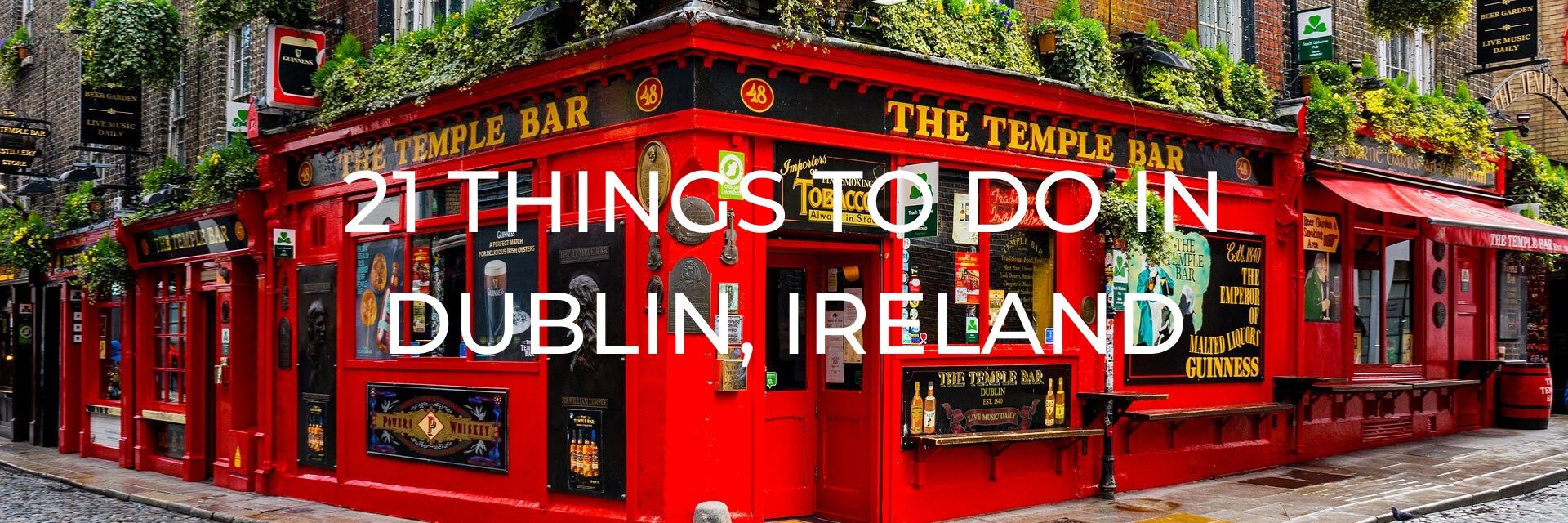
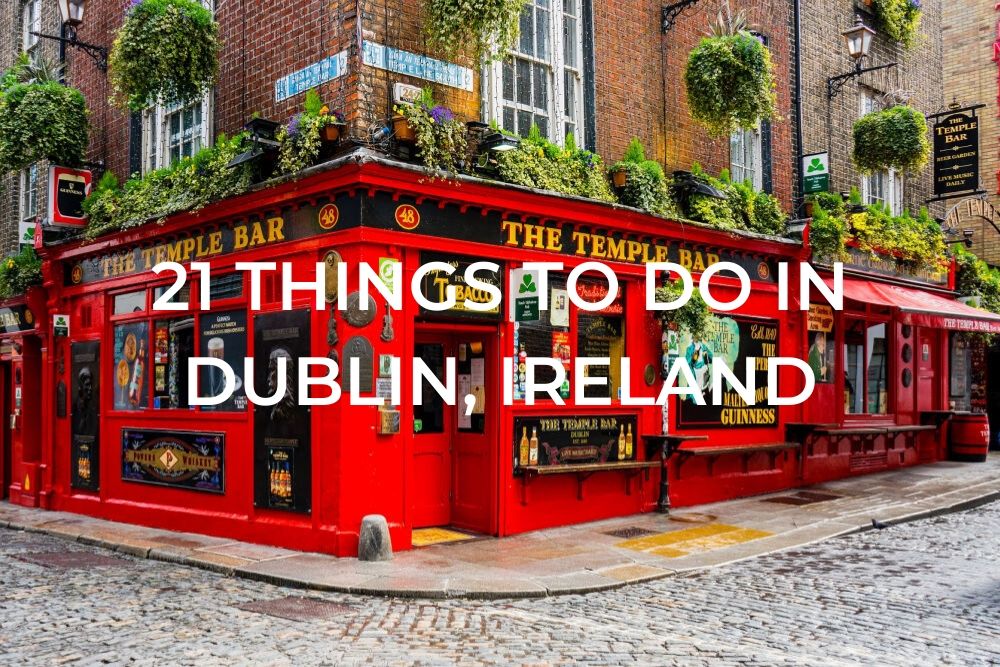
Dublin is the bustling and busy capital of Ireland and is one of Europe’s most youthful cities, despite it being such an ancient town with many, many centuries of history to learn about. The oldest landmarks of the city are still among the most interesting to visit, but they are now complemented by a wealth of new and modern attractions.
The beautiful city is set on the River Liffey, fringed by the majestic Dublin Bay, with the lovely Wicklow mountains rising to the south. It is easy to explore on foot to wander its elegant Georgian streets and the historic Temple Bar area with its narrow lanes, traditional pubs and mouth-watering restaurants. Add this to the friendly hospitality Ireland is famous for and the lively traditional music and you really can’t go wrong dedicating any portion of a trip to Ireland to exploring Dublin.
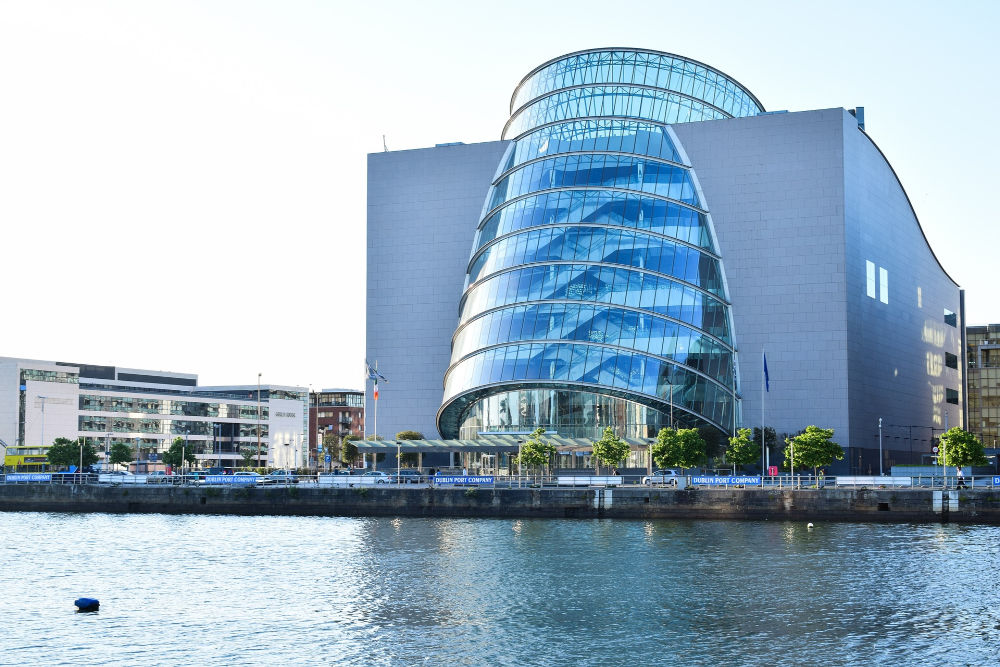
A map showing the location of everything can be found at the end of the post.
Want to save this for later? Click the Pinterest button on the left for a pinnable image!
This post may contain affiliate links. Please read our full disclosure policy here.
VISIT DALKEY CASTLE
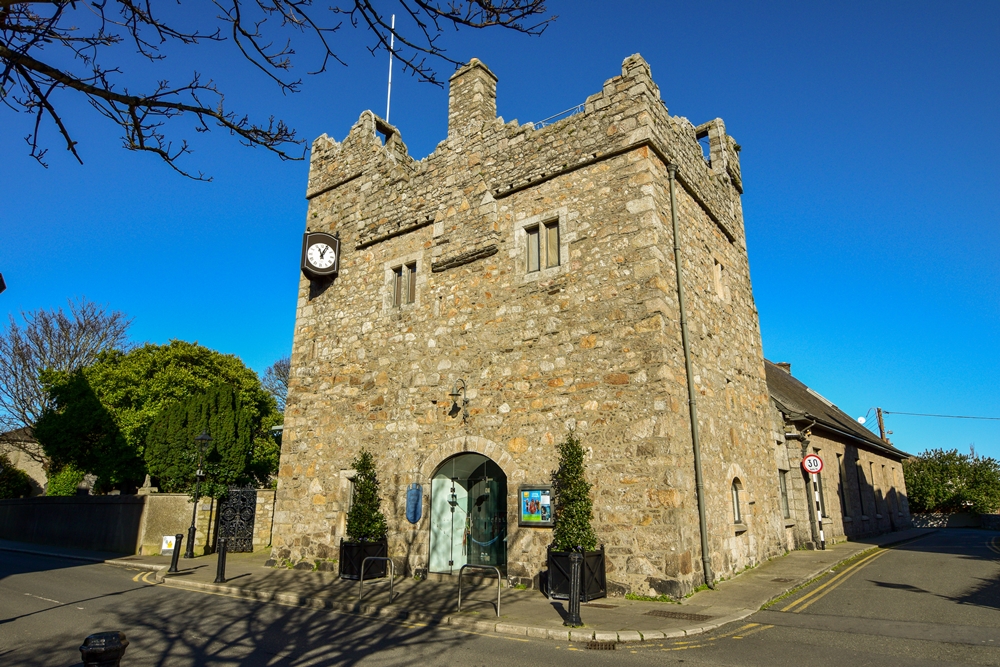
While Dublin Castle is famed for its profound history, a simple little tower house in the suburbs of Dublin hits the perfect note when it comes to Dublin castle attractions. Dalkey Castle, located some 18 km outside the centre on the DART line (Dublin’s light rail system), is that attraction. The castle was one of a string of seven castles that defined the coastal town of Dalkey from the 13th century on. To this day Dalkey remains rich in culture and history, and a tour of Dalkey village is an excellent day trip from Dublin.
Dalkey Castle’s living history tours are performed by a troupe of actors from the nearby Delig Inis Theatre company, and really bring the place to life. Their depictions of characters who once called the castle home are spot on and delivered with a sharp turn of humour. Didn’t you decide to come to Ireland for the famous craic? Well its here in bucket-loads. The characters include the archer who takes great joy in boiling his enemies, and the lord of the house, a barber surgeon, who offers free services to all visitors. Anyone for some bloodletting? You’ll learn lots along the way and are guaranteed to leave laughing. Entertainment and history; the perfect combination on any tour.
Recommended by John of Carpe Diem Eire
Reviews of Dalkey Castle | Castle Street, Dalkey A96 DE61 Ireland
HELPFUL TIP:
One of the best was to save money on attractions in Dublin is with the Dublin Pass. It includes entry to over 30 top attractions, monuments and museums, as well as a wide range of additional discounts and dining offers. Dalkey Castle is included on the Dublin Pass.
See the Deer in Phoenix Park
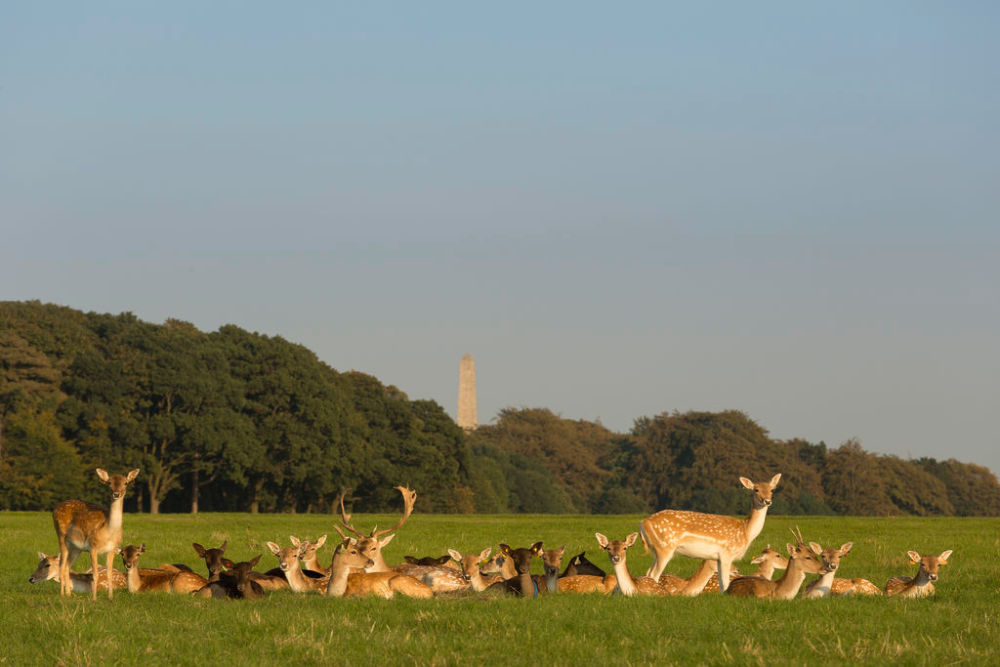
Photo Credit: Fáilte Ireland / Photographer: Rob Durston
While it would be great if we all had endless holiday time, it’s still possible to see and do a lot with just a weekend in Dublin. The city is filled with history and surprises at every turn. One of the more unusual activities is a visit to Phoenix Park to spot the wild fallow deer that roam freely here!
In 1662 the park was established and the deer were imported from Great Britain by the Duke of Ormond. Back then, the deer weren’t there strictly to roam as they please and for tourists to take photos (from a distance). Instead, they were brought to Dublin for hunting — both for sport and for food.
Phoenix Park is 707 hectares (1,750 acres), which means that spotting the 600 or so deer that live here isn’t as easy as you may think. Your best chance would be to go early in the morning when the park is quiet, and rent one of the bicycles to cover as much ground as you can!
It’s important to remember that even though it’s an urban park, the deer are wild. Feeding is not allowed and you must maintain a 50-meter distance from them.
Recommended by Dariece of Your Irish Adventure
Reviews of Phoenix Park | Parkgate Street, Conyngham Road, Dublin 8, Ireland
ATTEND THE ST. PATRICK’S DAY PARADE
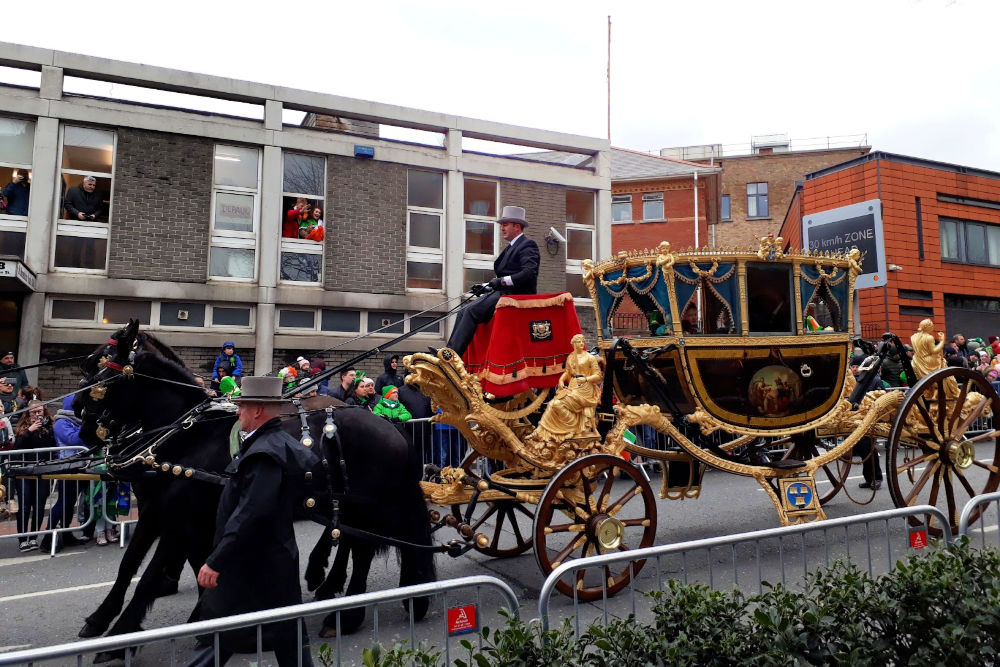
If you’re planning a trip to Dublin and you’re flexible about the dates you might want to be in town for the traditional St. Patrick’s Parade. March 17th is St. Patrick’s Day and the Parade is usually held during the closest weekend to that date. St. Patrick was Ireland’s patron saint, the one who brought Christianity to the island. These days, the celebration has evolved to a big scale event for Irish communities around the world. It is about every aspect of Irish life: culture, food, beer and a lot of shamrocks.
Getting back to the St. Patrick’s Parade in Dublin, about half a million people attended the event in the last years. The parade starts at noon, but you need to get there early to get a good spot. It starts from Parnell Square and goes by Trinity College, Christchurch Cathedral and finishes at St. Patrick’s Cathedral. Music, uniforms, colourful outfits and theatrics are all part of the street parade. After the parade, when everyone is in a good mood, the party moves to the famous Dublin pubs.
Recommended by Anda of Travel For a While
Reviews of St. Patrick’s Festival and Parade | City Centre, starting at Parnell Square, Dublin 1, Ireland
EXPLORE ARCHAEOLOGY AT THE NATIONAL MUSEUM
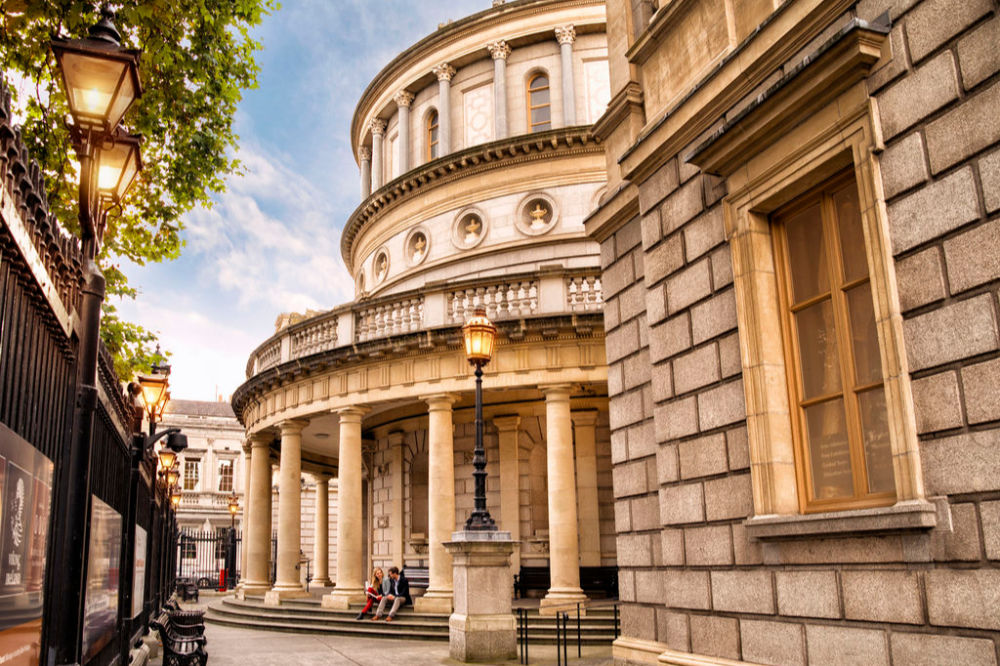
The Archaeology Department at the National Museum of Ireland is free to visit — just like the other three sites. And that’s very surprising, considering the wealth of permanent and temporary exhibitions you can visit.
Although quite limited in size, the museum features many interesting artefacts from different time periods, that perfectly cover the often tumultuous history of Ireland. One of the museum’s highlights are the the bog bodies – human cadavers that were naturally mummified in a peat bog. Although, fair warning, you might not want to visit this exhibit with small children.
Besides the national history, the Archaeology site of the National Museum of Ireland also covers Ancient Egypt and ceramics and glass from Ancient Cyprus, among other periods. It’s also the place to be to learn about the legacy of Vikings and Celts.
In conclusion: whether you’re looking to fill 30 minutes with your children or a rainy afternoon travelling by yourself, the Archaeology Museum in Dublin is the place to be. Trust me, you won’t regret it.
Recommended by Sander of Ars Currendi
Reviews of National Museum of Ireland – Archaeology | Kildare Street, Dublin 2, D02 F627 Ireland
HELPFUL TIP:
One of the best was to save money on attractions in Dublin is with the Dublin Pass. It includes entry to over 30 top attractions, monuments and museums, as well as a wide range of additional discounts and dining offers. The Archaeology Department of the National Museum is included on the Dublin Pass.
DO A LITTLE SHOPPING AT DUBLIN FLEA MARKET
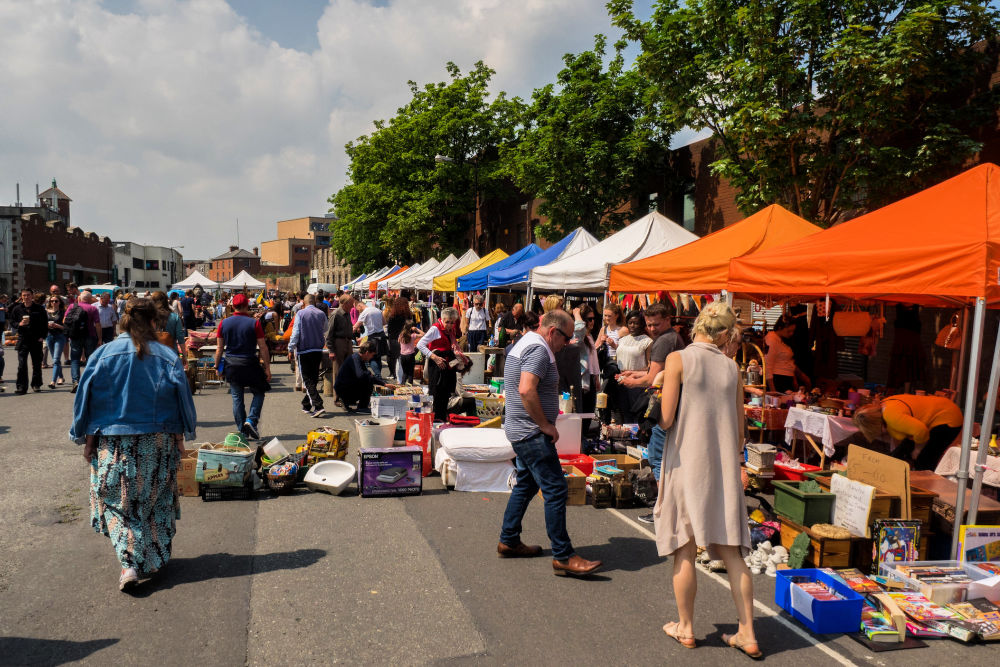
Photo Credit: Sebastian Dooris / CC0 1.0
Are you a fan of flea markets? Then you need to go bargain hunting in the famous Dublin Flea Market. This amazing flea market is held every last Sunday of the month in the Digital Hub on Thomas Street. The Dublin Flea Market attracts lovers of everything vintage, vinyl collectors or just people wanting to sniff out a bargain.
The Dublin Flea Market is a great day out for the whole family with amazing food stalls and even live music. Every single month there are more than 80 stalls set up with more than 5000 visitors. Next to vintage pieces you will also be able to buy locally produced goods and hand-crafted items. You will also be able to enjoy some great food from all over the world at the many little food stalls.
The Dublin Flea Market is a great place to check out if you are looking for something to do with the family.
Recommended by Lieze of Glitter Rebel
Reviews of Dublin Flea Market | Newmarket, Dublin 8 Ireland
VISIT AN OLD PRISON CELL AT KILMAINHAM GAOL
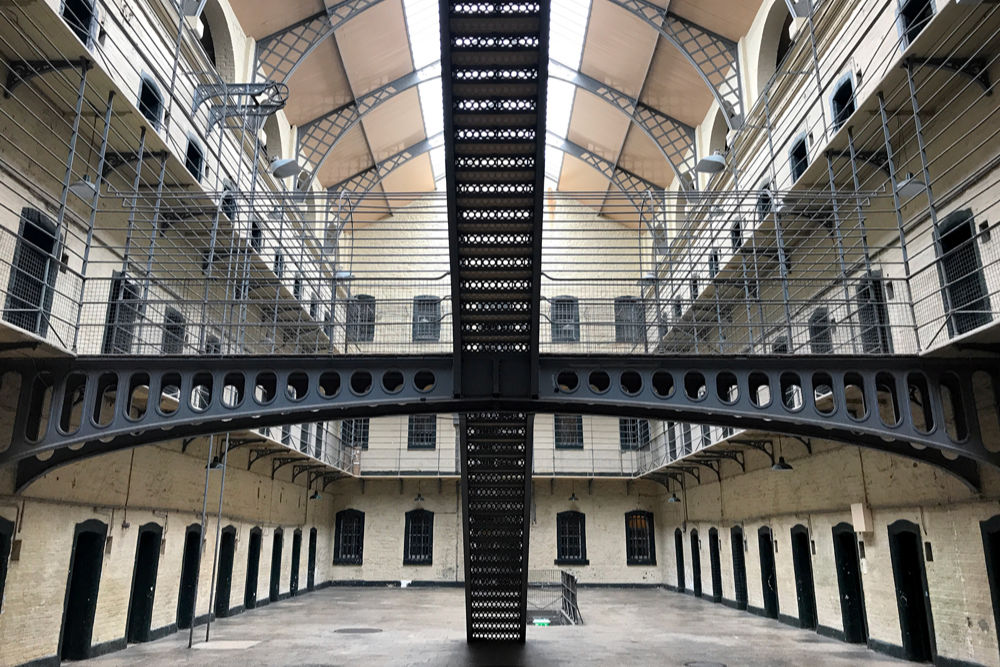
For a hearty slice of Irish Republican history, and to better understand Ireland past and present, visit Dublin’s Kilmainham Gaol.
Europe’s largest unoccupied prison first opened its doors in 1796 as the county gaol for Dublin, advocating reform through a brutal regime of discipline and fear. However, Kilmainham Gaol is best known for and is symbolic of, the fight for Irish independence. The leading figures in every rebellion against British rule since 1798 have been detained here, from Henry Joy Mc Cracken to Éamon de Valera.
A tour of Kilmainham Gaol takes you through Ireland’s social and political history, from the cells housing those early criminals to its striking East Wing, which has latterly been used extensively as a filming location. When the tour is finished, make time to visit the excellent museum which is adjacent to the gaol
Kilmainham Gaol is located on Inchicore Rd, Kilmainham, Dublin 8, 15 – 20 minutes’ walk from Dublin Heuston mainline station. It is also served by local buses 13, 40, 69 and 79. As this is a popular attraction, pre-book online to avoid disappointment.
Recommended by Bridget of The Flashpacker
Reviews of Kilmainham Gaol Museum | Inchicore Road, Dublin D08 T2X5 Ireland
TOUR DUBLIN CASTLE
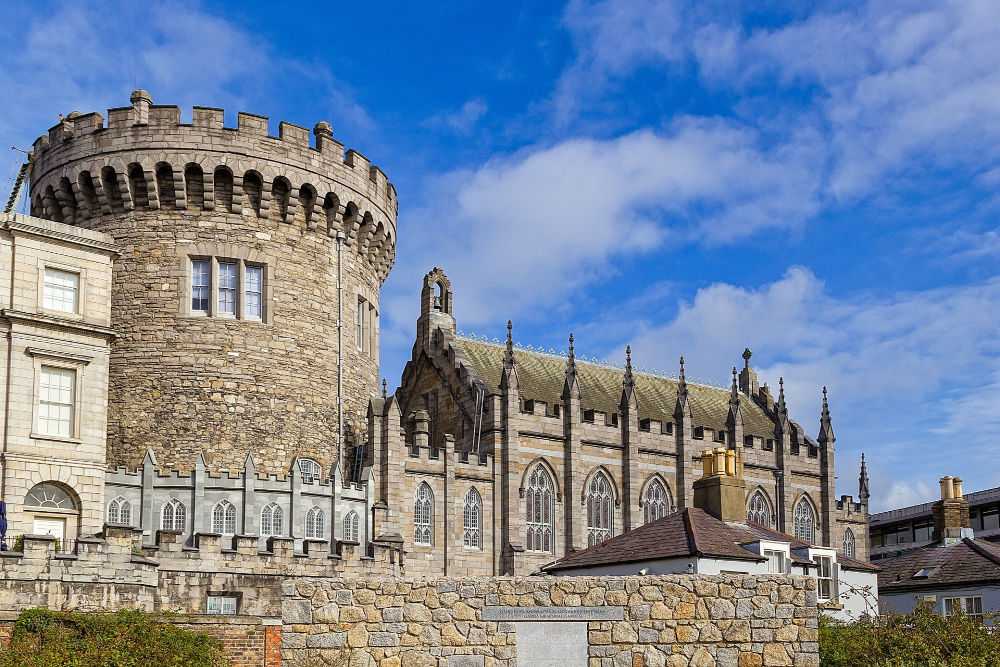
If you’re including Dublin in your Ireland road trip, you need to include a trip to Dublin Castle. This beautiful castle is still a working government building, as well as a tourist attraction but don’t worry- it’s open 7 days a week for visits from the public.
The castle was built in the 13th century and served as the main administrative headquarters for Ireland for hundreds of years. It was built on the site of a Viking stronghold, so there is plenty of Viking and medieval history to see to- it’s fascinating to see all the different cultures which have lived and ruled from one place!
The Castle gardens are also worth a visit- we really enjoyed seeing all the different monuments, statues and beautiful glass mosaics which are laid out around the pathways.
In general, it takes about half a day to look around the Castle and grounds, although you can choose to stay longer if you wish. You can also join a tour and find out all the details that you never see when you wander around on your own.
Recommended by Kat of Wandering Bird
Reviews of Dublin Castle | Dame Street Dublin Castle, Dublin 2, Ireland
HELPFUL TIP:
One of the best was to save money on attractions in Dublin is with the Dublin Pass. It includes entry to over 30 top attractions, monuments and museums, as well as a wide range of additional discounts and dining offers. Dublin Castle is included on the Dublin Pass.
READ MORE Looking for more castles to explore? Check out these 12 beautiful and historic castles to visit in Ireland!
MONUMENT TO OSCAR WILDE
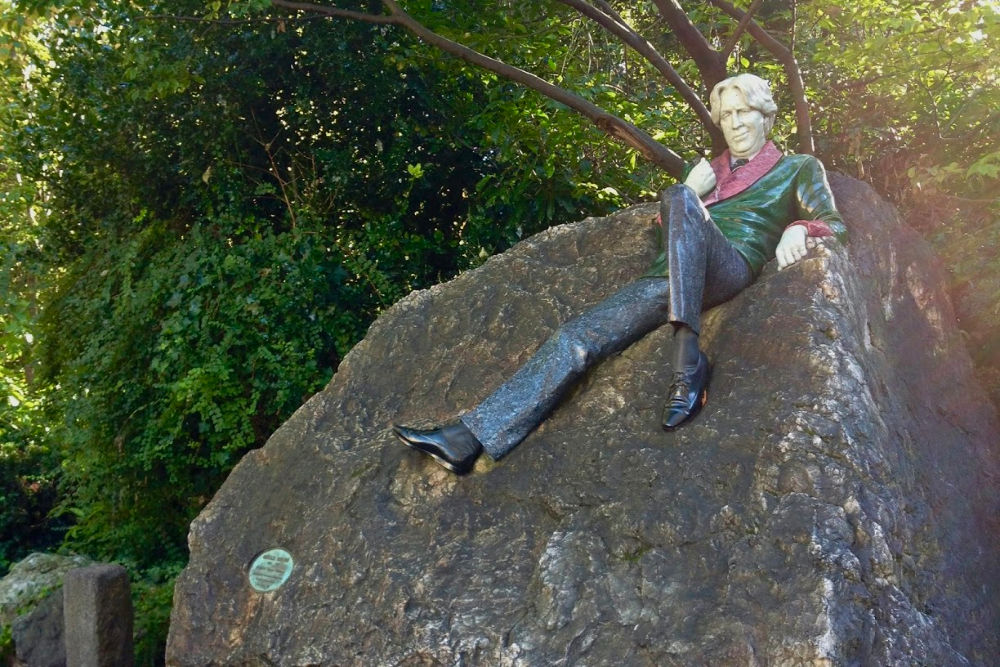
The playwright, novelist and poet Oscar Wilde is undoubtedly one of the most dazzling literary figures in Dublin. He was born in 1854 and spent his childhood in a house directly opposite his present statue in Merrion Square – one of Dublin’s five historic Georgian town squares.
The statue itself is a colourful memorial to audacity and conveys the witty, cynical, decadent nature of the writer, who wrote works such as “Being Serious is Everything” and “The Portrait of Dorian Gray”. Booker Award winner John Banville (also known as Benjamin Black) wrote a tribute to Wilde that you will hear from actor Andrew Scott (BAFTA winner and Olivier Award winner).
The statue was released in 1997 by Wilde’s grandson Merlin Holland and is the very first statue that was built in honour of this amazing writer. When in Dublin make sure to plan a short visit to this statue and admire the great work of the English sculptor Danny Osborne.
Recommended by Clemens and Anne of Travellers Archive
Reviews of the Monumen to Oscar Wilde | Corner of Merrion Square Park, Dublin, Ireland
SEE THE DOORS OF DUBLIN
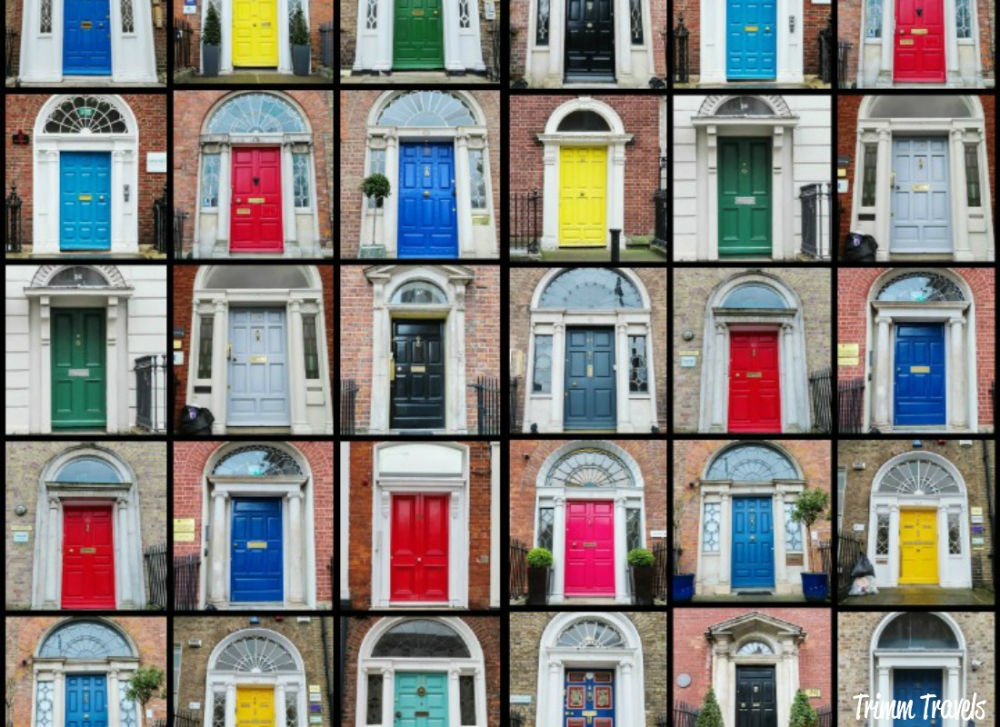
Before my much-anticipated trip, I had heard a lot about the colorful doors of Dublin and I couldn’t wait to see them in person! These famous doors, now Irish icons, have interesting stories both on how they came into existence and how they became famous.
Due to the fact that everyone in the “Georgian Dublin” period in the 1700-1800s had to adhere to such strict architectural policies, homeowners painted their doors bright colors for personality. They also added fancy ornaments and fan lights.
Much later on assignment to Dublin in the 1970s, an American from New York City saw them and photographed many of them to make a collage. This collage became famous after it was placed in the office of an Irish tourism board on Fifth Avenue in NYC!
These beautiful doors can be found all over Dublin but are most commonly found in Fitzwilliam and Merrion Squares. It was fun to see how many I could find and make my own collage. They make a fantastic Irish souvenir!
Recommended by Heather of Trimm Travels
ST. STEPHENS GREEN
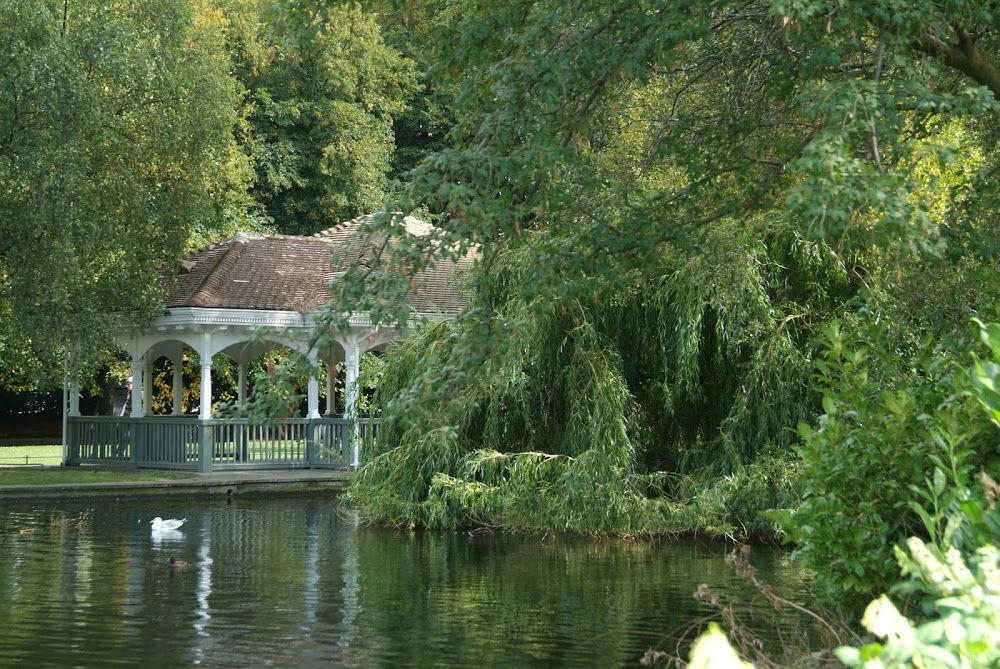
If there is one park that can claim to be the most famous park in Dublin then it is St. Stephen’s Green. This park is conveniently located in the heart of the city (at the end of Grafton Street, a mere 3-minute stroll from Trinity College Dublin), and it is the ideal spot for a pit stop during a busy sightseeing trip. The great thing about St. Stephen’s Green is that it is more than just a park. It is a place that is steeped in Irish history.
In the 18th century, it was the site of multiple executions, in the 19th century the famous Guinness family redesigned it for the public, and during the Easter Rising of 1916, it was used as an Irish rebel base against the British troops. Nowadays, there are numerous busts of renowned Irish personalities, for example, James Joyce or Wolfe Tone, a plant garden for the visually impaired, lakes to saunter around and a lot more. Definitely make sure to stop by!
Recommended by Emer and Nils of Let’s Go Ireland
Reviews of St. Stephens Green | Top End of Grafton Street, Dublin 2, Ireland
VISIT THE LITTLE MUSEUM OF DUBLIN
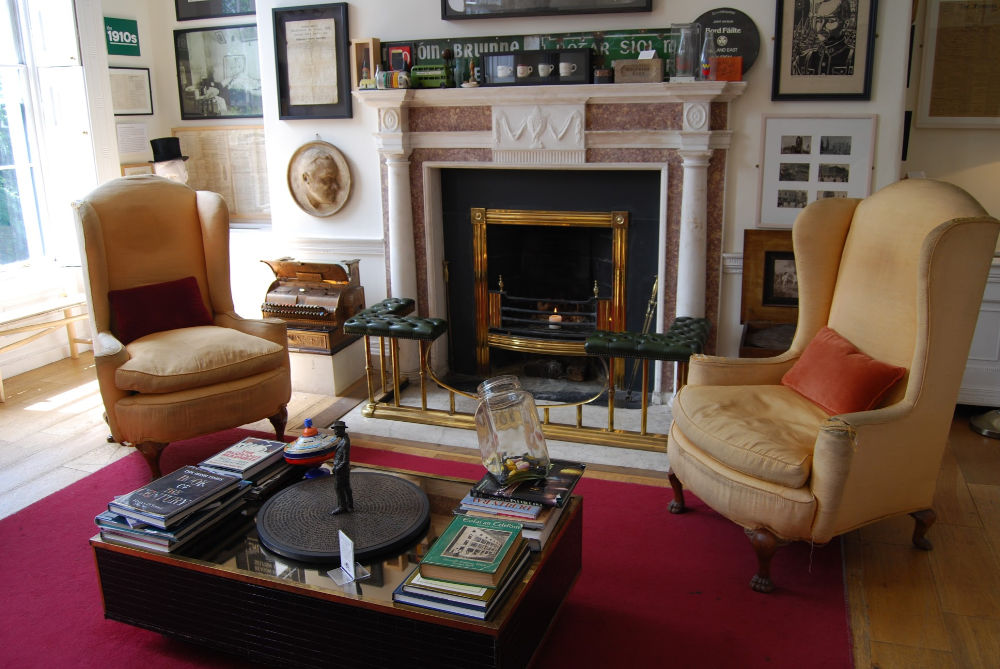
Some of the 5,000 artefacts in this crowdsourced museum – like the life-sized puppets greeting guests on the first landing – are instantly recognizable to Dubliners as beloved characters from a local TV show. (I had to ask). Other pieces have international appeal, like the wooden music stand used as a makeshift lectern when President John F. Kennedy visited the country in 1963. Irish parliament had no podium then.
Stroll through the serene mid-century living room as a warm-up to the U2 tribute den covered in concert posters and awards with life-sized mannequins leaning on the house’s original fireplace. Admission is free with a Hop on Hop off bus tour ticket. Wander the first floor on your own but join the guided tours on the second and third floor to get the real story behind the menagerie you’re looking at.
Recommended by Sherri Telenko of www.dogtrotting.net
Reviews of the Little Museum of Dublin | 15 St. Stephen’s Green, Dublin D02 XY76 Ireland
HELPFUL TIP:
One of the best was to save money on attractions in Dublin is with the Dublin Pass. It includes entry to over 30 top attractions, monuments and museums, as well as a wide range of additional discounts and dining offers. The Little Museum of Dublin is included on the Dublin Pass.
VISIT POOLBEG LIGHTHOUSE
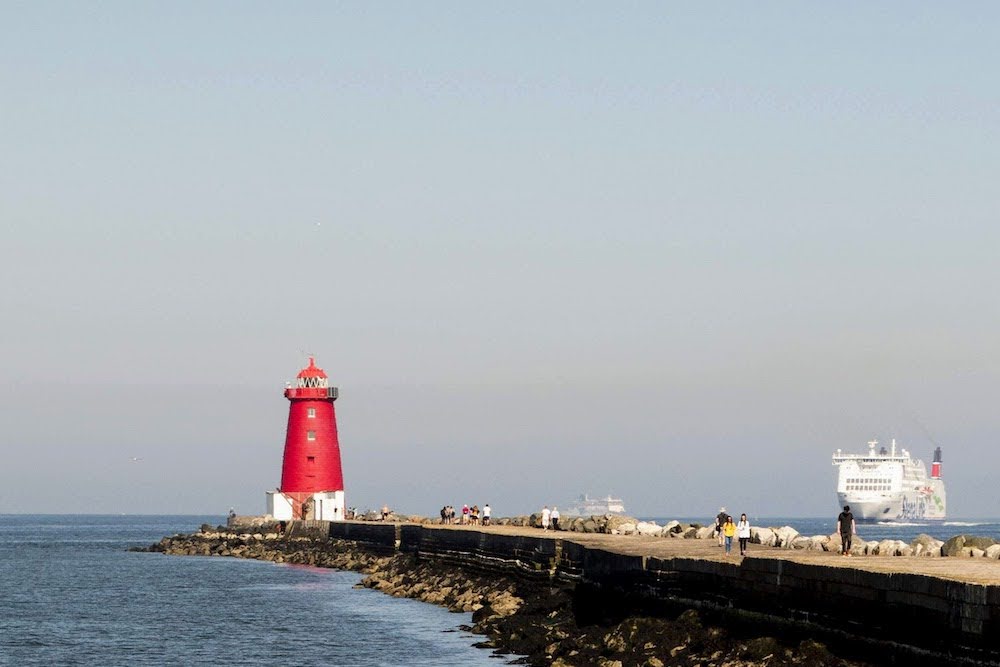
The Poolbeg Towers are located along Sandymount Strand on the Irish Sea which is walkable from Dublin’s City Centre. If the weather is fine, embark on the Poolbeg Lighthouse walk from Sandymount.
Built in the mid-18th century, Poolbeg Lighthouse is a bright red beacon at the terminus of the Great South Wall. At the time it was built at the end of the 18th century, the Great South Wall was one of the longest sea-walls in the world. Sandymount Strand to Poolbeg Lighthouse is one of Dublin’s most popular walks among locals.
If you go at low tide, you can take a shortcut across the beach at Sandymount Strand. Beware of high tide though. There are certain times of the year when parts of the Great South Wall drop below sea level meaning you’d have to wait for the tide to recede before you could return if you time it wrong. Make sure to pack a jacket since the wind whipping in over the Irish Sea can be bracing. This is Ireland at its finest.
Recommended by Jennifer (aka Dr.J) of Sidewalk Safari
Reviews of Poolbeg Lighthouse | South Wall, Dublin, Ireland
TAKE A FOLKLORE BUS TOUR
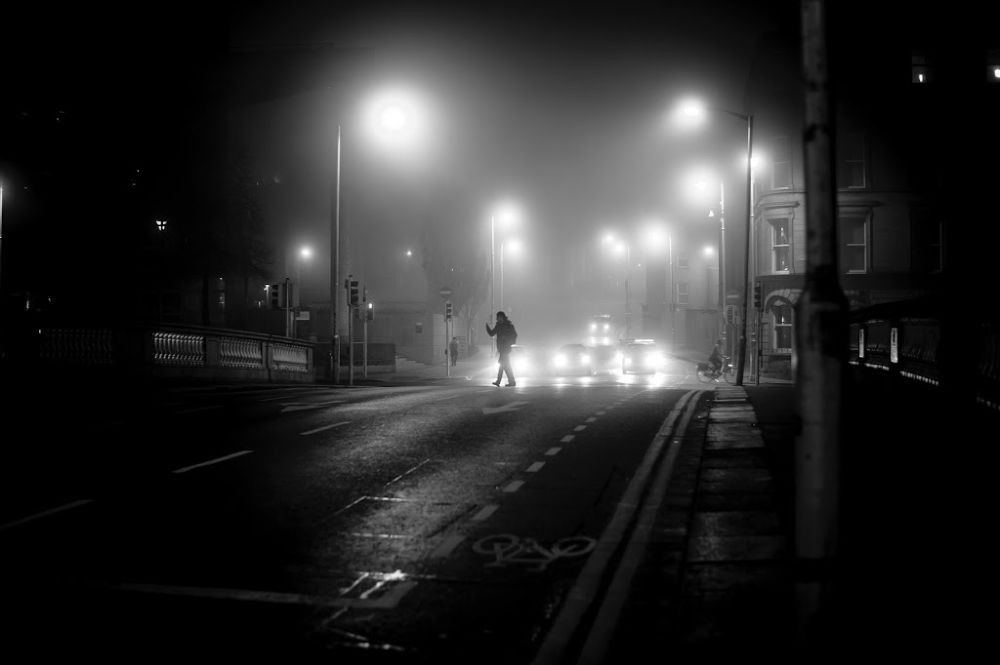
Although a little cheesy, the Folklore bus tour is one of the most fascinating things to do in Dublin. Board the double-decker bus with a bar downstairs (serving up Guinness, of course) and seating upstairs, along with a fireplace and armchair at the front.
After a few minutes of making yourself comfortable on the top deck of the bus, you’ll meet your charismatic storyteller, dressed in traditional Irish garments and ready to entertain you.
The bus takes you through Dublin, stopping off at various locations including a magic forest and a spectacular beach – quite exhilarating on a January evening! At each stop, the storyteller recounts compelling tales from times gone by, such as those of fairies, giants and Leprechauns.
On the return journey into the centre of Dublin, you’ll learn a traditional Irish song and enjoy a sing-along, with a complimentary Guinness to loosen you up! This is an important part of Irish culture on account that it’s always raining, so the locals have to pass the time by drinking and singing.
If you’d like to do something a little different in Dublin, you can catch the folklore bus every evening at 7:15 pm outside the College Green Tourist Office.
Recommended by Nell of Adventures with Nell
TEMPLE BAR
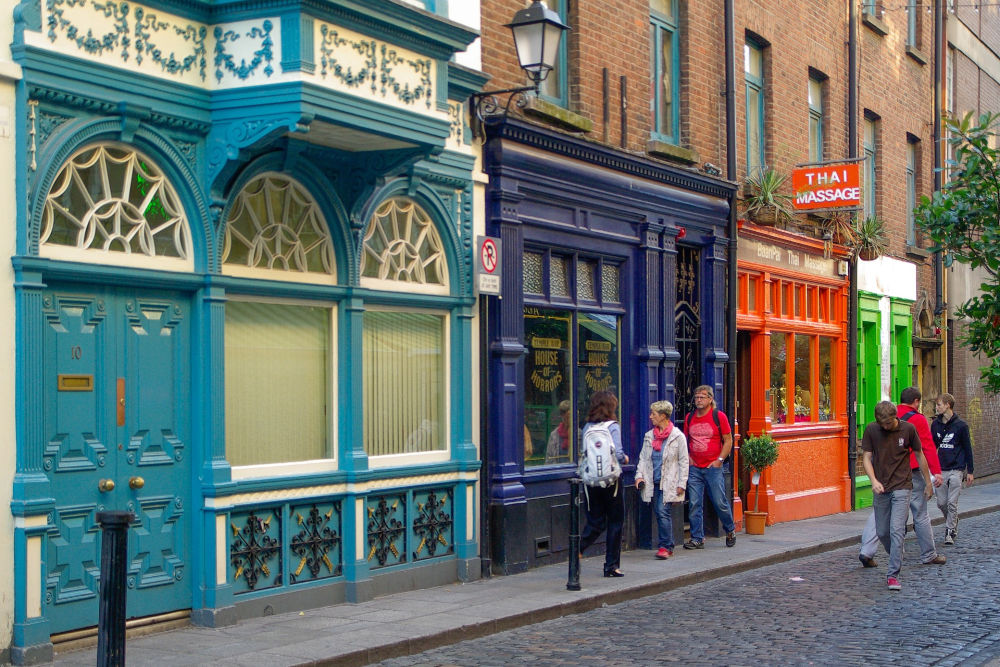
Temple Bar is more than just the vibrant red bar seen in so many photographs; it is actually a whole area on the south bank of the River Liffey in central Dublin with off-shooting streets and narrow cobblestone lanes that has lots to offer visitors!
In medieval days this area was called St. Andrews Parish and was outside the city walls but fell into disuse because it was so exposed to attacks. That all changed in the 17th century when it was redeveloped to create gardens for the houses of wealthy English families. Some think the name ‘Temple Bar’ came from one of these families (the Temple family) who built a house here during the 1600s. However, it is more likely the name comes from the Temple Bar district of London where the main tollgate into London was located.
Today Temple Bar is renowned for its restaurants and nightlife and can be Dublin’s party hub. There are many pubs and bars, which are great places to hear live Irish folk music, and street musicians gather to play their hearts out.
During the day, Temple Bar is also a vibrant (albeit quieter!) place to visit. You can catch a show at one of the theatres, stroll through modern art galleries, shop at trendy boutique shops or open-air markets, or just relax in a café for some people watching.
Day or night, you are sure to find lots to do to keep you busy and entertained in Temple Bar!
Recommended by Us
Reviews of Temple Bar | Dublin 2, Ireland
GPO WITNESS HISTORY MUSEUM
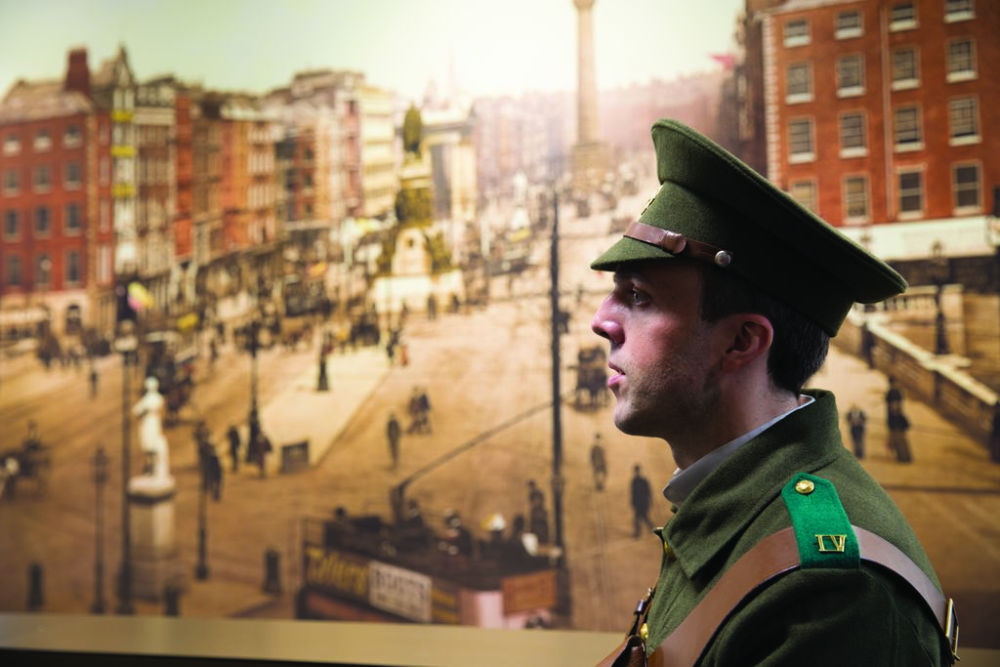
Photo Credit: Fáilte Ireland / Photographer: James Bowden
If there is one unique spot that I would recommend heading to on your next trip to Dublin, it would be the GPO Witness History Museum located right on O’Connell Street. Housed in the General Post Office (GPO) building, this award-winning museum is an exciting place to learn and explore the history of the 1916 Easter Rising, exactly where it happened.
Built in 1818, the GPO building served as the headquarters for the men and women who partook in the Easter Rising of 1916. It still operates as a post office but also houses state-of-the-art-digital displays and authentic artifacts that show off Ireland’s contemporary history, industry, and science.
The award-winning GPO Witness History Museum is open year-round, and I highly recommend giving this place a visit before you leave Dublin. Step inside on to learn a little more about the more recent history of the Irish Republic and how it came to creation.
Recommended by Ashley of Impact Winder
Reviews of GPO Witness History Museum | O’Connell Street, Dublin D01 F5P2 Ireland
HELPFUL TIP:
One of the best was to save money on attractions in Dublin is with the Dublin Pass. It includes entry to over 30 top attractions, monuments and museums, as well as a wide range of additional discounts and dining offers. The GPO Witness History Visitor Centre is included on the Dublin Pass.
LIBRARY AT TRINITY COLLEGE

Located in the heart of Dublin in an oasis of gardens and parks, the Trinity College is a masterpiece of architecture and history. Little remains of the original buildings but the imposing classical façade and Corinthian columns standing today give it an 18th century feel.
The university was founded in 1592 by Elizabeth I on confiscated monastery land with the goal to “civilize Ireland with both learning and Protestant religion”. It is no wonder that it became a source of division in the city, especially as Catholics were only allowed entry if they converted.
Perhaps the best-known part of the university is the Old Library, especially the Long Room with over 2 million volumes shelved in the double-decker layers of huge floor-to-ceiling shelving in the beautiful cathedral-like hall.
The Old Library is the home to one of Ireland’s national treasures, and likely the reason most people visit – the Book of Kells. This precious hand-drawn manuscript of the four Gospels of the New Testament was created by monks in the 8th century with elaborate scripting and colourful illumination.
The Old Library is also one of five copyright libraries in Ireland and the UK which means it is entitled to a copy of every book published in the British Isles and is a bibliophile’s dream come true to visit!
TIP: The Long Room can get very busy during the summer so we recommend buying fast-track tickets online which gives you timed admission to the exhibition and allows you to skip the line.
Recommended by Us
Reviews of Trinity College | Grafton Street, College Green, Dublin 2, Ireland
EXPLORE MALAHIDE CASTLE
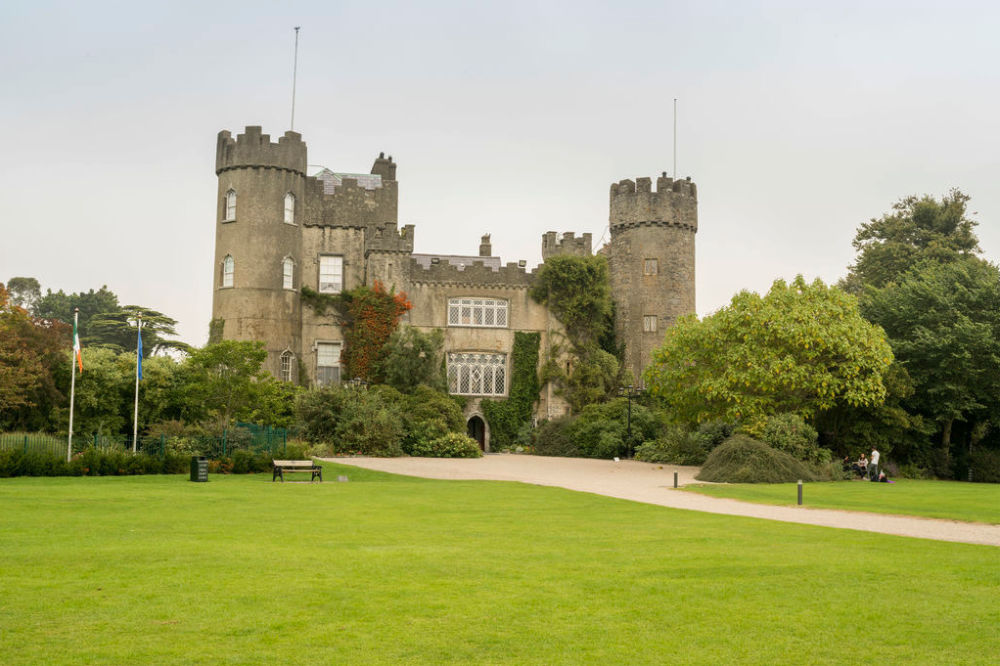
Nestled on hundreds of acres of parkland on the outskirts of Dublin you’ll find the beautiful Malahide Castle and Gardens. Other than a brief period when the castle was under Cromwell, Malahide castle was owned by the Talbot family for almost 800 years making it one of the oldest occupied castles in Ireland.
The castle structure dates from several periods with the oldest being its 14th-century tower. It was renovated over the centuries and the castle tour shows you its transition from a simple fortification to a charming, Gothic-style, country house with ornamental turrets and battlements. Inside it is furnished mainly from the 18th century and includes a collection of portraits from the National Gallery of Ireland.
But you must leave time to spend outside too in the wonderful botanical collections in the gardens around the castle. The Walled Gardens were originally the kitchen garden to provide food for the castle and are now one of only four botanical gardens in Ireland. They include several glasshouses including the impressive Victorian Conservatory. On the west lawn, you’ll find the Fairy Trail, and there is a butterfly house where you need to be quick with your camera to catch pictures of these pretty insects! Finally, train lovers will want to leave themselves time to explore the Casino Model Railway Museum that is on the castle grounds.
Recommended by Us
Reviews of Malahide Castle | Malahide Demesne, Malahide, Ireland
READ MORE Looking for more castles to explore? Check out these 12 beautiful and historic castles to visit in Ireland!
GUINNESS STOREHOUSE
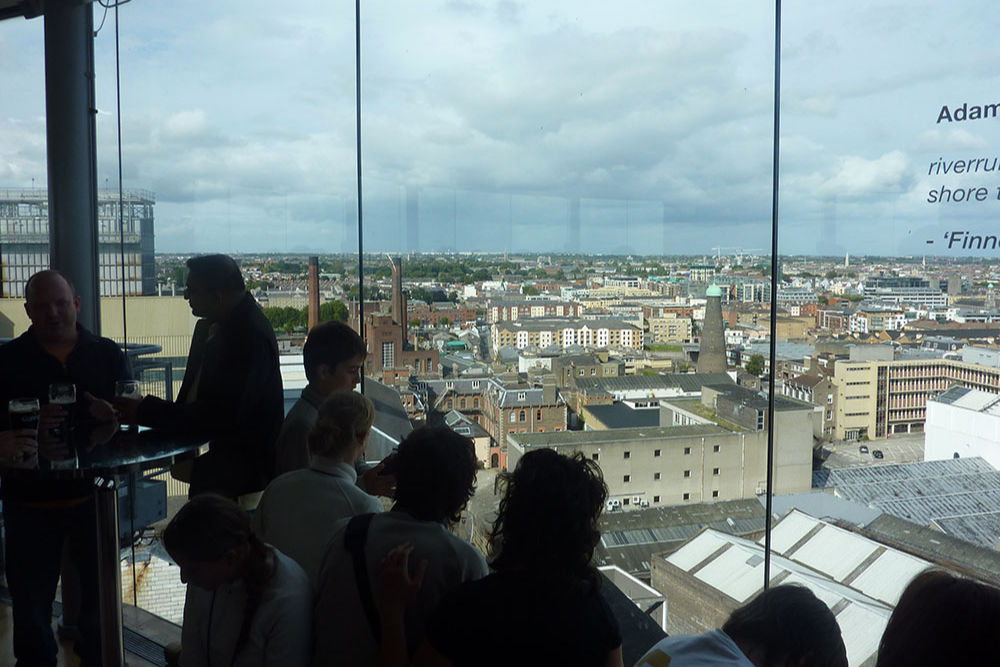
There are few alcohol drinks more synonymous with a country or city as Guinness is to Ireland and Dublin. It is a drink found on tap in near every restaurant and bar in the country as well as near every Irish Bar across the globe. And it all started at the Guinness storehouse.
So there is a lot going on at this attraction, including an introduction to the brewing of their revered stouts (water, barley, hops and yeast), along with the history in advertising and their founder Arthur Guinness. You will also have 2 opportunities to enjoy complimentary pints, the first at the ‘Perfect Pint bar’ if you take part in the pouring of your own pint of Guinness. Another pint is then included on top of admission at the final top floor (7th-floor) where the Gravity Bar shares panoramic views from above across Dublin.
Recommended by Allan of It’s Sometimes Sunny in Bangor
Reviews of Guinness Storehouse | Market Street, St. James Gate, Dublin 8, Ireland
HELPFUL TIP:
One of the best was to save money on attractions in Dublin is with the Dublin Pass. It includes entry to over 30 top attractions, monuments and museums, as well as a wide range of additional discounts and dining offers. The Guinness Storehouse is included on the Dublin Pass with Fast Track Entry.
MEET MOLLY MALONE
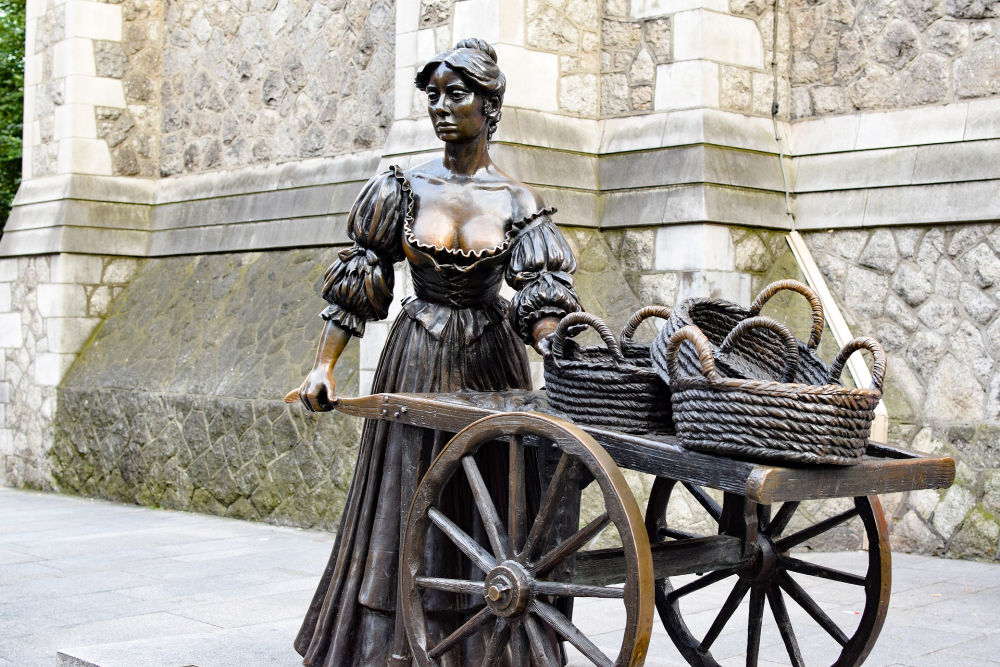
Presented to the city in 1988 as part of the Dublin Millennium celebrations, the Molly Malone statue takes pride of place in the heart of the city’s historic Georgian Quarter on Suffolk Street.
The enigmatic heroine of the famous song of the same name is immortalized in bronze as she watches the people who pass by her cart each day. This popular song has become the unofficial anthem of Dublin.
According to the lyrics of the song, which is also known as ‘Cockles and Mussels’, Molly Malone was a young and beautiful fishmonger who sold her wares from a cart on the streets of Dublin. In the song’s last verse, it tells of her dying of a fever and going on to haunt the city but it’s not really known if she ever actually existed.
Recommended by Us
Reviews of the Molly Malone Statue | Suffolk Street, Dublin, Ireland
HA’PENNY BRIDGE OVER THE RIVER LIFFY
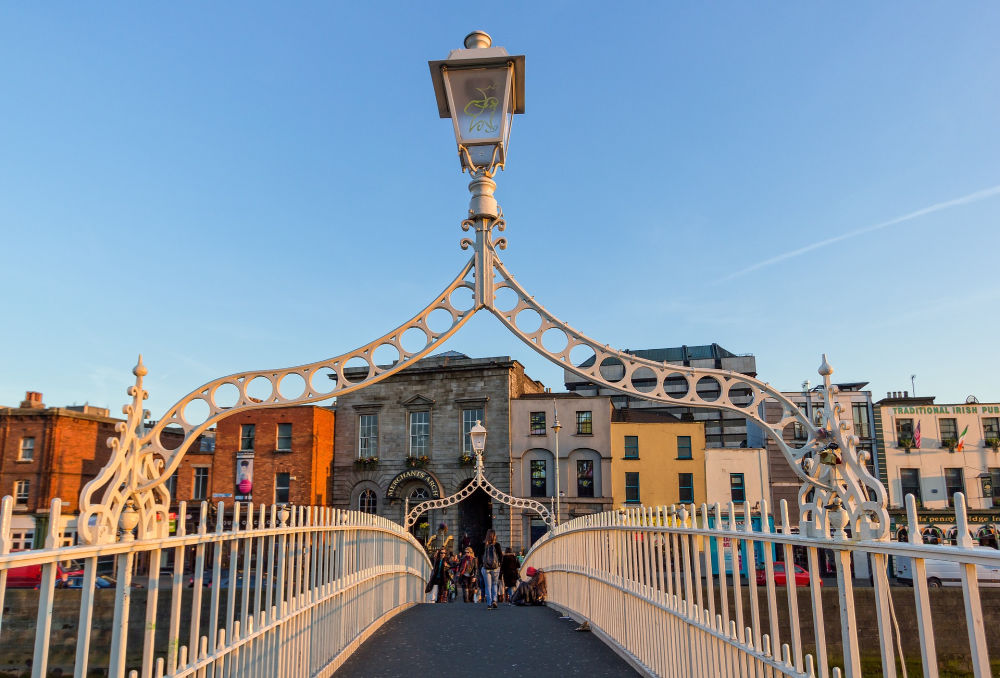
One of the best places to take a little break from sightseeing and exploring the city is along the River Liffey, especially on the most attractive of Dublin’s bridges – the Ha’Penny Bridge.
Pronounced “Hay-Penny” this graceful, pedestrian-only, bridge was built in 1816 and is one of the earliest cast-iron bridges in Europe. It is officially named the ‘Liffey Bridge’ but became known as the ‘Ha’Penny Bridge’ as it once cost half a penny in tolls to cross it until the turnstiles were removed in 1919 making it free to cross.
The bridge is at its prettiest after sundown when the old lamps on atop its three filigreed arches are lit up and the underside at each end is illuminated. If you can’t make it at night though, still take a few minutes to pop by and take in its photogenic arches and the views from the river.
Recommended by Us
Reviews of Ha’Penny Bridge | 14 Bachelors Walk, Wellington Quay, Dublin, Ireland
SAINT PATRICK’S CATHEDRAL
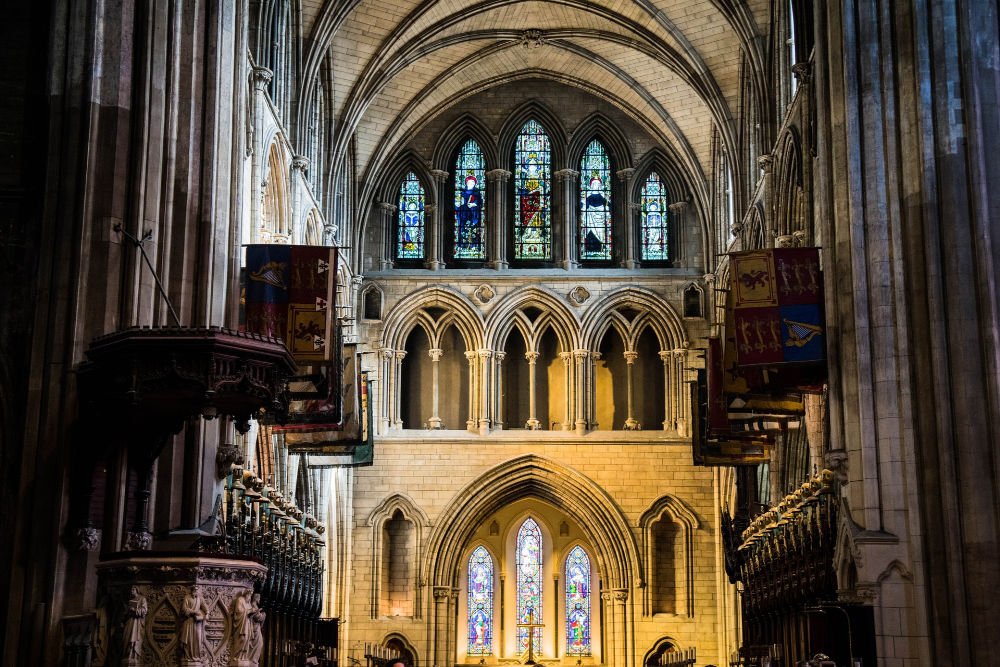
The cathedral is mainly English in style with a square medieval tower that houses the largest ringing peal of bells in the country and an 18th-century spire. It was here that St. Patrick himself reputedly baptised the local Celtic chieftains, making this a bit of fairly sacred land!
Today you can visit the moving collections of war memorials tucked away behind the huge nave, including a low-key tribute to the Irish who died in WWII. Besides the war memorials, there are notable tombs such as that of Jonathan Swift, the author of ‘Gulliver’s Travels’, and who was once a dean of Saint Patrick’s Cathedral.
In addition to its historical significance, the cathedral continues its cultural contributions to daily life in Dublin with choir concerts and lunchtime classical recitals and should definitely be a stop on your visit to Dublin.
Recommended by Us
Reviews of St. Patrick’s Cathedral | 21-50 Patrick’s Close Off Clanbrassil Street, Dublin 8, Ireland
HELPFUL TIP:
One of the best was to save money on attractions in Dublin is with the Dublin Pass. It includes entry to over 30 top attractions, monuments and museums, as well as a wide range of additional discounts and dining offers. St. Patrick’s Cathedral is included on the Dublin Pass.
Want to save this for later? Click the Pinterest button on the left for a pinnable image!
RESOURCES | PLAN YOUR TRIP TO DUBLIN
To book flights, rental cars, accommodations, and activities for your trip, please check out our recommended travel providers, favourite apps and websites.
These are a few tours we would recommend for your trip to Dublin.
Some of the links in the post above are affiliate links. This means if you click on the link and purchase the item, we will receive an affiliate commission but this does not affect the price to you. Please read our full disclosure policy here.
